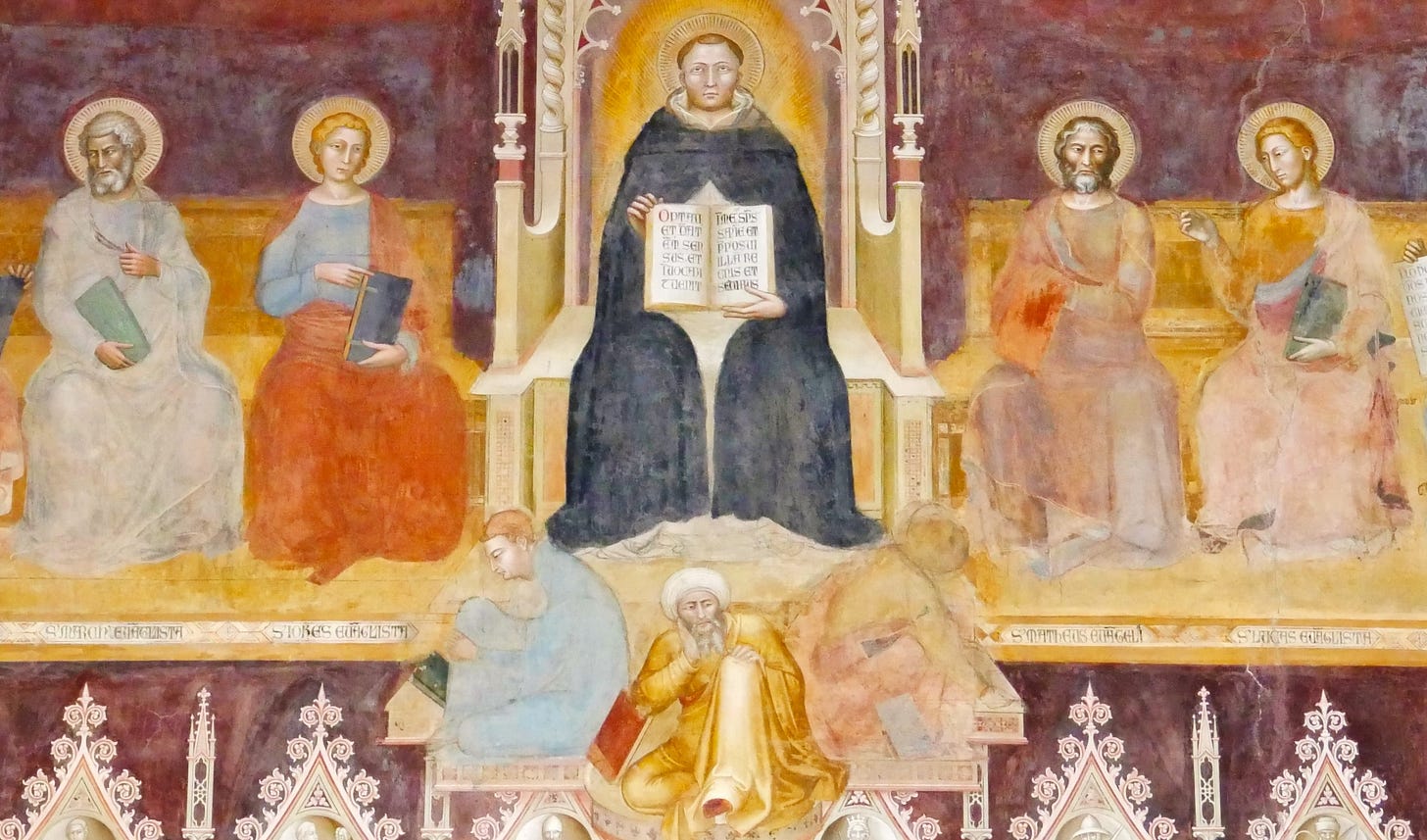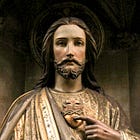What the founders of heresies and false religions have in common
Despite their diversity of age, rank, and doctrine, all heretics and founders of false religions bear the same spiritual mark.

Despite their diversity of age, rank, and doctrine, all heretics and founders of false religions bear the same spiritual mark.
Editor’s Notes
Did you miss our 1,000 subscriber milestone post? Check it out here:
In this section, Fr. Coleridge tells us…
How heretics of every age share a common spiritual character, despite all outward differences.
That Christ’s image of wolves in sheep’s clothing remains the clearest prophecy of their nature.
Why the universal opposition to the Church unites heresiarchs more than any doctrine ever has.
Even the most varied false teachers all fulfil the one unchanging portrait drawn by Christ.
For more on the context of this episode, see Part I.
The False Prophets
The Sermon on the Mount (To the End of the Lord’s Prayer)
Chapter XV
The False Prophets. St. Matt. vii. 15—20;
Story of the Gospels, § 34
Burns and Oates, London, 1878
Why did Christ warn of false teachers so early in His ministry?
What is the ‘appetite for destruction’ that drives false prophets?
Why the Apostles and New Testament so fiercely condemned heresy
What the founders of heresies and false religions have in common
Having surveyed the Apostles’ condemnations of false teachers, Father Coleridge now pauses to reflect on the pattern revealed: that across all ages and disguises, heresiarchs share a common and terrible likeness that perfectly fulfils our Lord’s image of wolves in sheep’s clothing.
Truthfulenss of Our Lord’s description
Before we pass on to the consideration of the test which our Lord gives us as the means of discerning these false teachers, it may be well to pause for a moment on the picture which is drawn for us in the Gospels, and in the passages to the Epistles to which reference has been made, of the heretical teachers of the Apostolic age and of all subsequent ages in the Church.
No other collection of men in human history presents the same features, especially if we include among the heretics men like the founders of Mohammedanism and Mormonism, and of all false religions and systems of life outside the Church.
The several characteristics which are summed up in passages like those which have been quoted from St. Paul, St. Peter, and St. Jude, are certainly found in different proportions in the persons of the various heresiarchs and masters of falsehood, but there is always a family likeness between them, which is found also in the false philosophers of modern, as well as of ancient times, in the men who teach materialism or rationalism, systems of physical science which exclude God, or mind or freewill, or the truth of the creation of the Universe, in England, France, or Germany, as well as those who provoked the scorn of Socrates or Plato in Athens.
For many of these men there is the excuse that they have either never known of the Church and her doctrine, or have been brought up in absolute antagonism to her—an antagonism produced by the foulest misrepresentation.
Or again, the representative of the truth of God to them has been some impiety, like the doctrine of Calvin, or some system of comfortable worldliness, like the less Catholic phase of Anglicanism.
Thus the picture is sometimes more mournful than absolutely hateful, for the teachers of falsehood have been groping after truth, and assailing it, under immense misconceptions, while they were so groping.
Great variety of false teachers
But, setting this consideration aside, there have been among the teachers of evil who have sprung up inside the Church herself, men most entirely different in character, in talents, in position, in learning, in the motives which urged them along their fatal course, in the doctrine which they have perverted, in the speculative character of the tenets which they have advanced.
They have assailed every article of the Creed, they have sought to defile every portion of the great field of the theology of the Church.
They have attacked the Most Holy Trinity itself, the Persons of the Father, the Son, and the Holy Ghost, they have waged war against the Immaculate Mother of God, the Angels, the Saints, the Church, the Roman Pontiff, the Sacraments, the Sacrifice, the Priesthood.
They have not left man his free-will, nor the grace by which it is elevated and assisted, nor the truth of the virtue which that grace can enable him to practise, nor his power to keep the commandments of God, nor the merit of his good works, nor his hope of eternal reward, nor the resurrection of his flesh, nor the spirituality and immortality of his soul.
They have risen up in the sanctuary itself, they have sat on Patriarchal or Episcopal thrones, they have come from the cloister of the monk or the friar, or from the cave of the anchorite.
All sexes, all ages, all ranks and callings of life, have contributed to swell their numbers, and they have as often appealed to the passions or prejudices of the multitude, as to the avarice of nobles, or the licentiousness or ambition of monarchs and their counsellors.
They have been different among themselves in every way, and no two of them have ever agreed together, or even tolerated the idea of any alliance, except against the Church.
And yet the portrait drawn of them by our Lord when He described them as wolves in the clothing of sheep, when He further spoke of them as evil trees, whose fruit was like the stock on which it grew, as thorns and thistles in their sterility and wounding power, is found, after the experience of so many centuries, to suit them all.
It is practically the same picture as that which is drawn in the passages of the Epistles already quoted.
It is to the image of the wolves in sheep’s clothing that Coleridge now turns, which will form the final part of this series.
Subscribe now to never miss an article:
The False Prophets
Why did Christ warn of false teachers so early in His ministry?
What is the ‘appetite for destruction’ that drives false prophets?
Why the Apostles and New Testament so fiercely condemned heresy
What the founders of heresies and false religions have in common
Here’s why you should subscribe to The Father Coleridge Reader and share with others:
Fr Coleridge provides solid explanations of the entirety of the Gospel
His work is full of doctrine and piety, and is highly credible
He gives a clear trajectory of the life of Christ, its drama and all its stages—increasing our appreciation and admiration for the God-Man.
If more Catholics knew about works like Coleridge’s, then other works based on sentimentality and dubious private revelations would be much less attractive.
But sourcing and curating the texts, cleaning up scans, and editing them for online reading is a labour of love, and takes a lot of time.
Will you lend us a hand and hit subscribe?
Follow our projects on Twitter, YouTube and Telegram:



The wolf in Sheep's clothing is ubiquitous! Heaven help us!